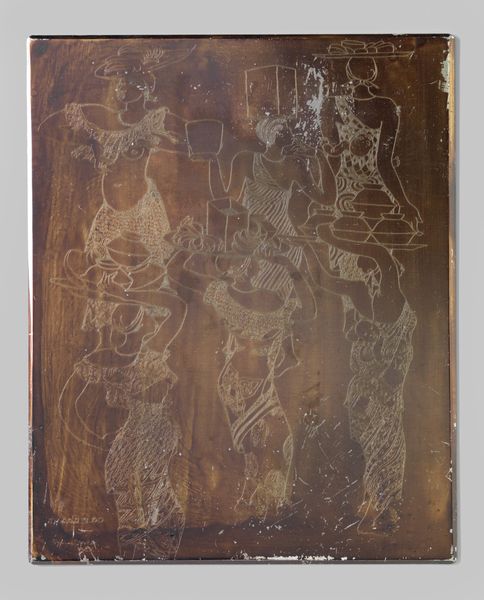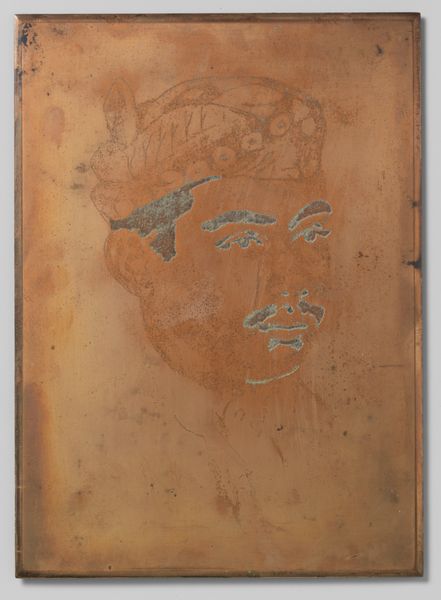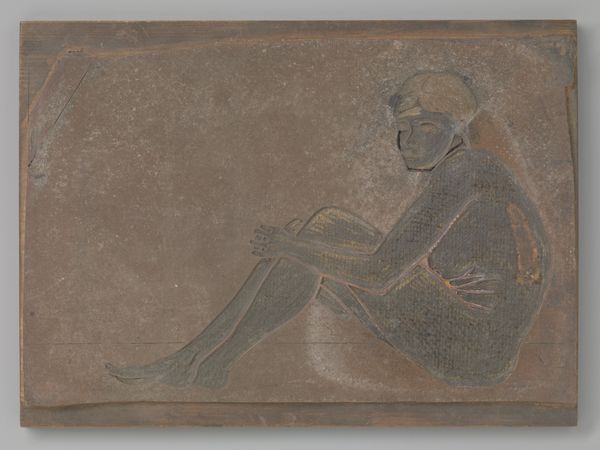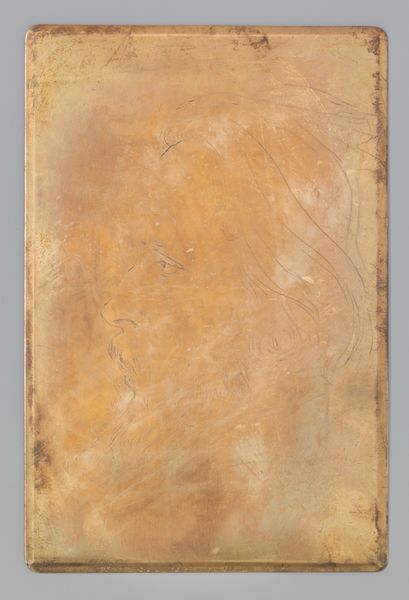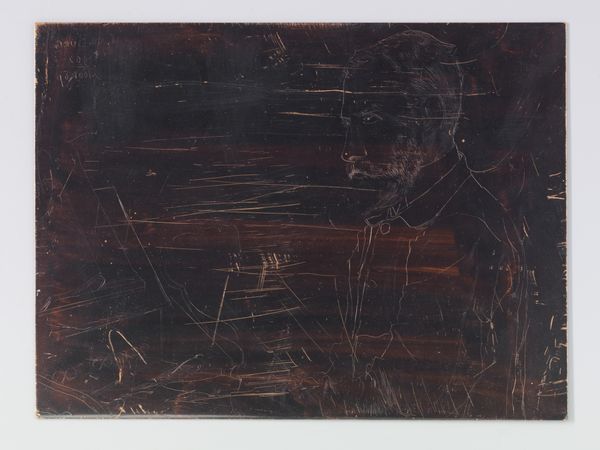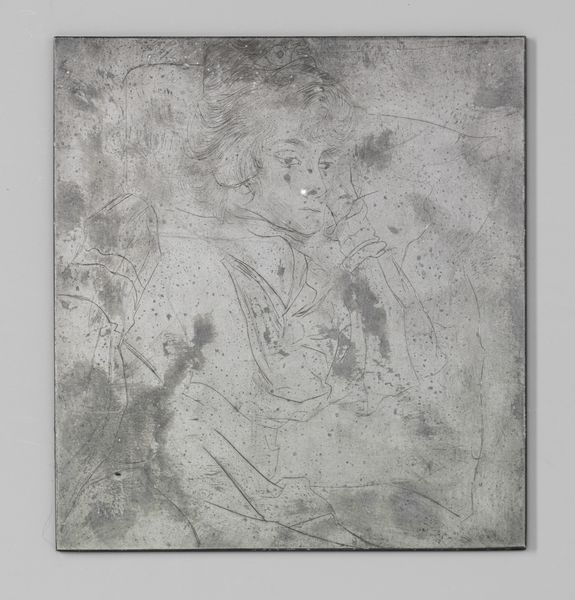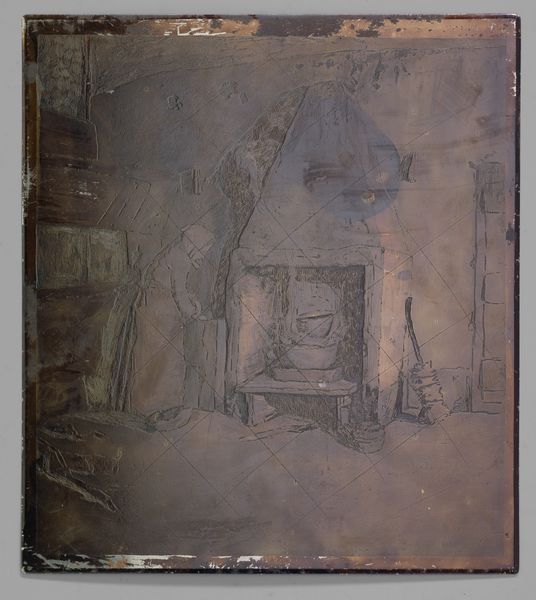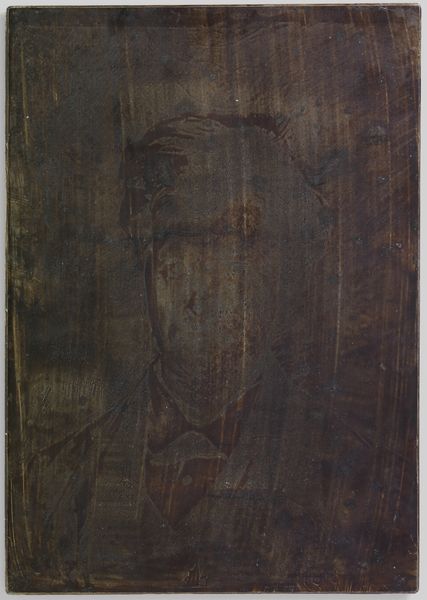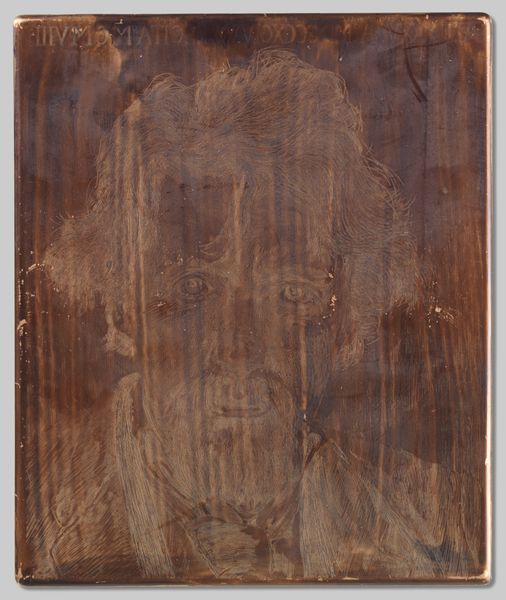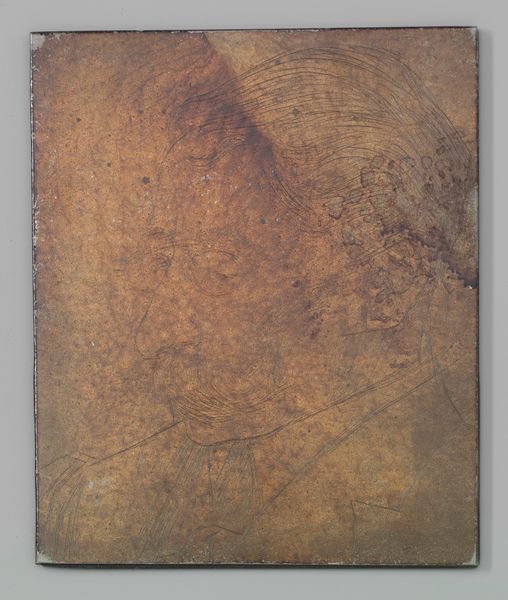
daguerreotype, photography
#
portrait
#
water colours
#
daguerreotype
#
photography
#
coloured pencil
#
mixed medium
#
mixed media
#
watercolor
#
realism
Dimensions: height 128 mm, width 100 mm
Copyright: Rijks Museum: Open Domain
Curator: This portrait is actually a daguerreotype, dating from the latter half of the 19th century, attributed to Paul-Edme Le Rat. It's titled 'Portret van Adriaen van de Venne, 1616,' but it depicts a work dating back centuries prior. Editor: Ethereal, ghostly...almost as if a memory is struggling to materialize. The warm sepia tones give it a melancholic beauty, wouldn’t you agree? Curator: Absolutely. Let’s consider the technical side. Daguerreotypes are fascinating: each one is unique. This photograph would have been created on a silvered copper plate, meticulously prepared and developed with mercury vapor. Think about the laborious process versus today's instant snapshot! Editor: A truly remarkable feat to grasp. And this almost obscured portrait... there's an artistic dance occurring between decay and permanence. I am left pondering about how time influences memory, literally eroding our grasp on those precious moments and beloved ones. Curator: Precisely! Plus, think about Le Rat choosing to depict a 17th-century portrait through this relatively new photographic process. It is an example of old meeting new. This fusion certainly raises questions about authenticity, replication, and the artistic intention. Editor: It does indeed. Were these works like trading cards of their time? Also, seeing the imperfections, those scratches and fading... they speak volumes about the material's vulnerability and endurance—an interesting contrast in and of itself. It makes the piece incredibly moving, even more so than one perfectly preserved, I suppose. Curator: It’s interesting how these physical flaws end up adding another layer of historical and social texture to the image, blurring the boundary between the portrait itself and the photograph. Editor: Well said. Each scratch could possibly tell a story, perhaps reflecting the changing conditions that these pieces had been exposed to? Ultimately, I'm left pondering on the idea of the "aura" – that unique presence – being captured, lost, and possibly rediscovered in the passage of time. Curator: It prompts reflections, doesn't it? Thanks for your insightful view, I enjoyed that! Editor: Likewise. Thank you.
Comments
No comments
Be the first to comment and join the conversation on the ultimate creative platform.
